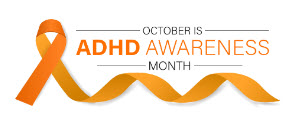
So, what does ADHD look like in a child?
ADHD isn’t a one-size-fits-all diagnosis. It can be presented in three main ways:

- Predominantly Inattentive Presentation: Think of a kiddo daydreaming while a math problem floats by like a balloon. They may struggle to focus on tasks and easily lose things.
- Predominantly Hyperactive-Impulsive Presentation: Picture a little whirlwind! These kids might bounce around, interrupt conversations, or act without thinking (like jumping off the couch thinking it’s a trampoline).
- Combined Presentation: This is where the fun begins! Kids with this type can have a mix of inattention and hyperactivity, keeping parents and teachers on their toes.
How can adults in the life of a child with ADHD healthily support them?
Create Routines: A consistent schedule can help kiddos feel more secure and focused. Think of it as setting the stage for a great performance—everyone knows when the show starts!
Break Tasks into Chunks: Large assignments can feel overwhelming. Breaking them into smaller pieces is like eating a big slice of cake one bite at a time—much more manageable!
Positive Reinforcement: Celebrate small victories! A sticker chart or verbal praise can go a long way in boosting their confidence and motivation.
Incorporate Movement: Let’s face it—kids have the energy to burn! Integrating short movement breaks can help them refocus. Think of it as a mini dance party to shake off the wiggles!
Awareness is key! The more we understand ADHD, the better we can support our children. Schools, parents, and communities can work together to create environments where every child—ADHD or not—can thrive.
You can learn more about ADHD and how to support your loved ones with ADHD here!
At Child Action, we strive to support ALL families with all their needs, and this includes children who need extra support as they go through school! If you have a school-aged child, who is 13 years of age or older with an active IEP, they can remain on Child Action and receive services! Reach out to your case manager for more information. If you are unsure of who your case manager is, please call 1-916-369-0191 and speak to the receptionist.
